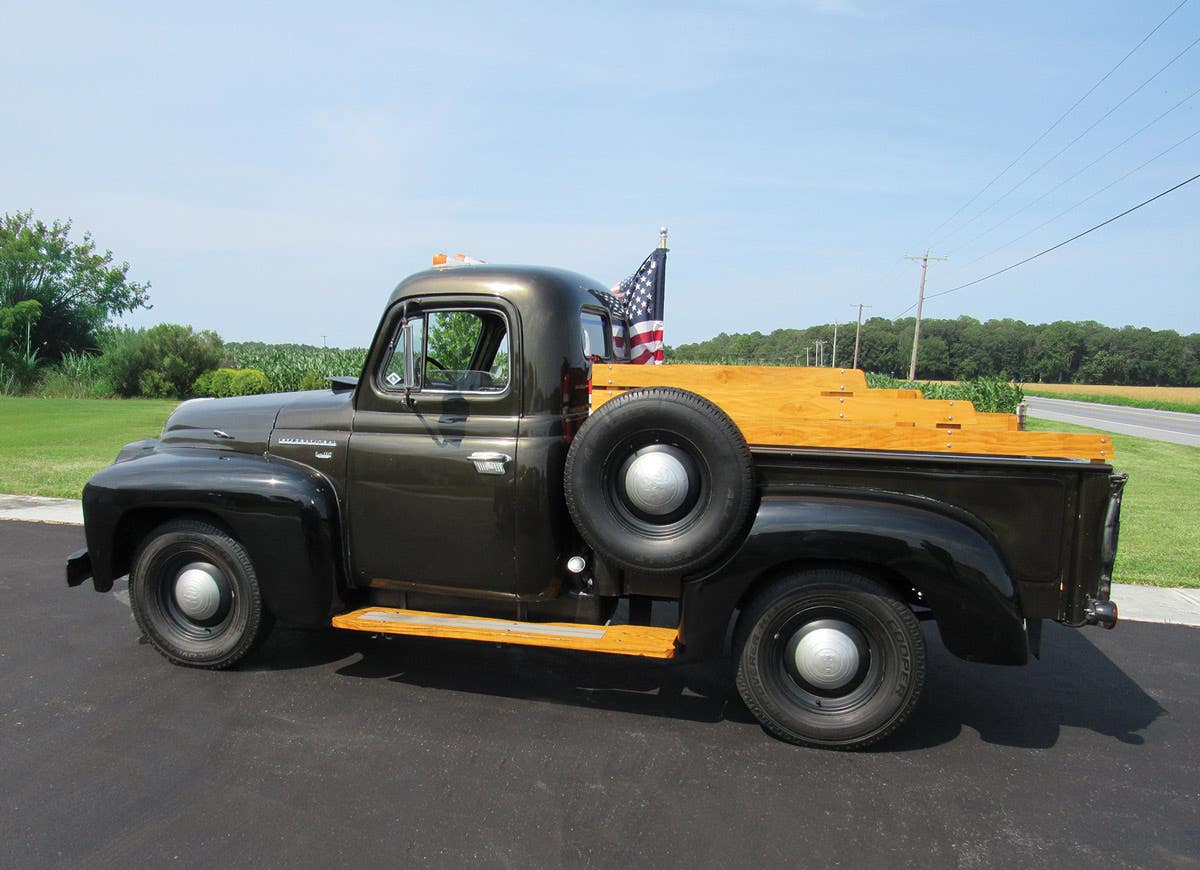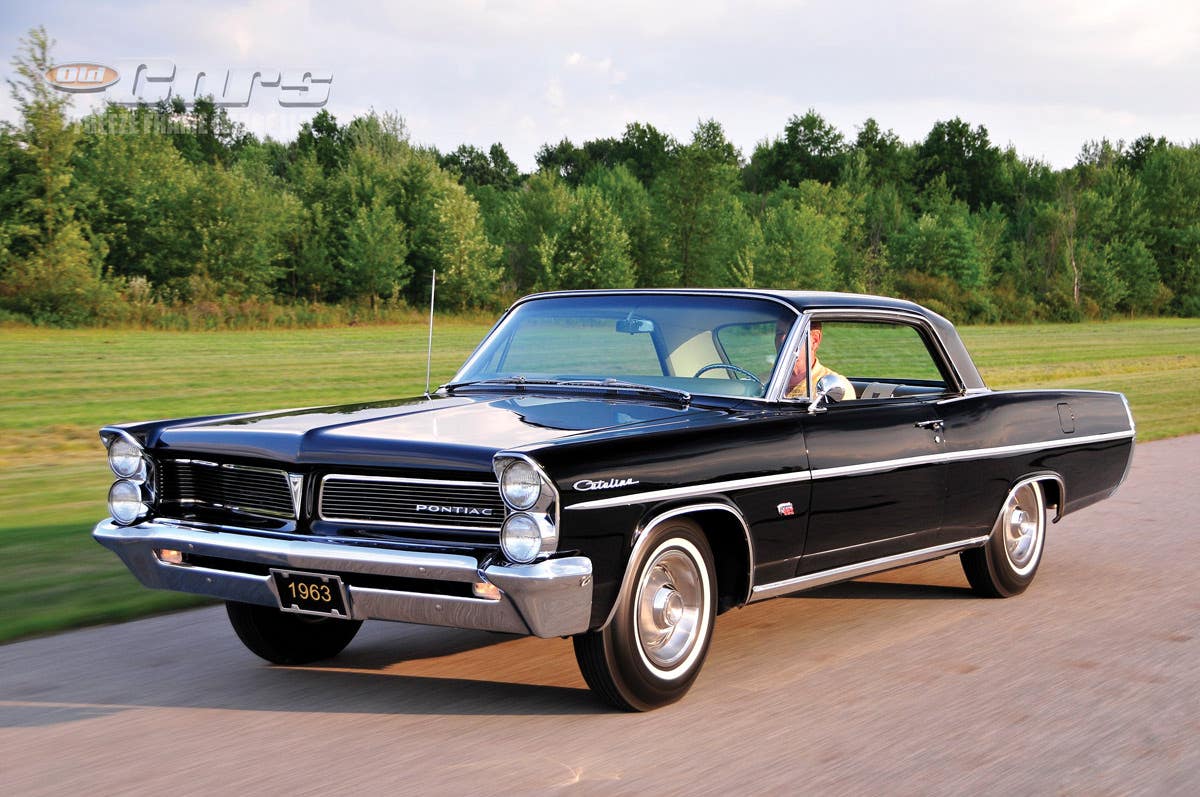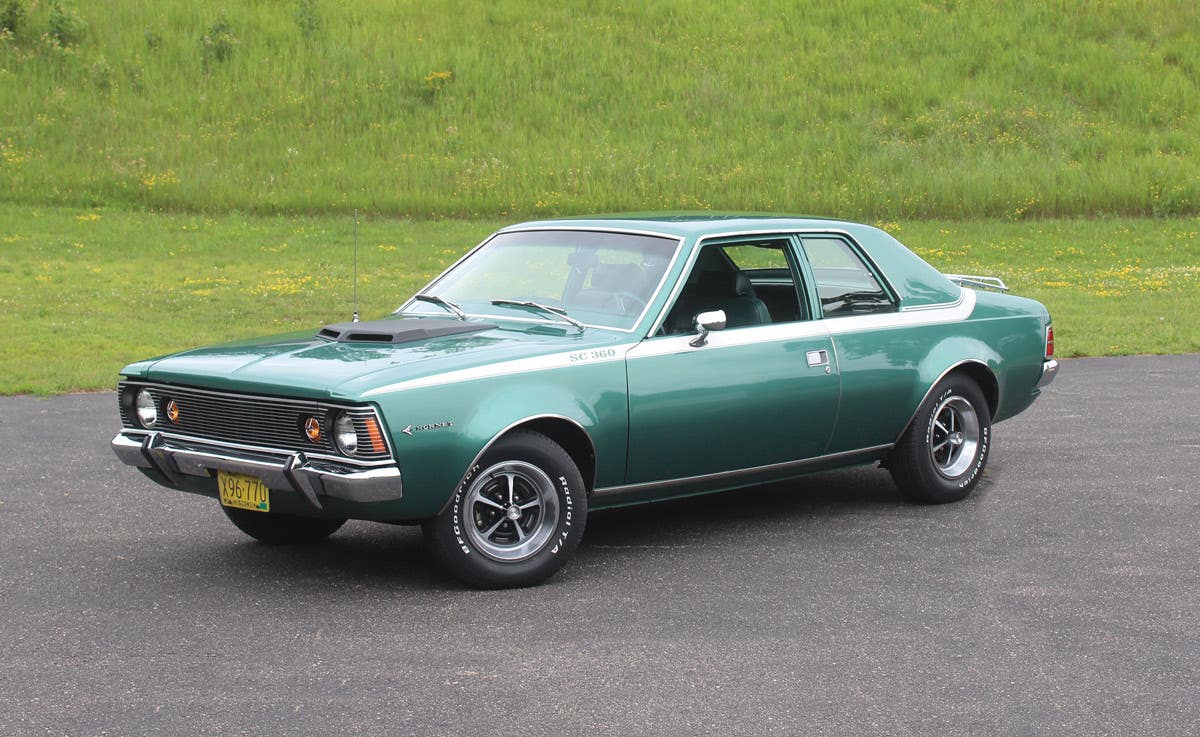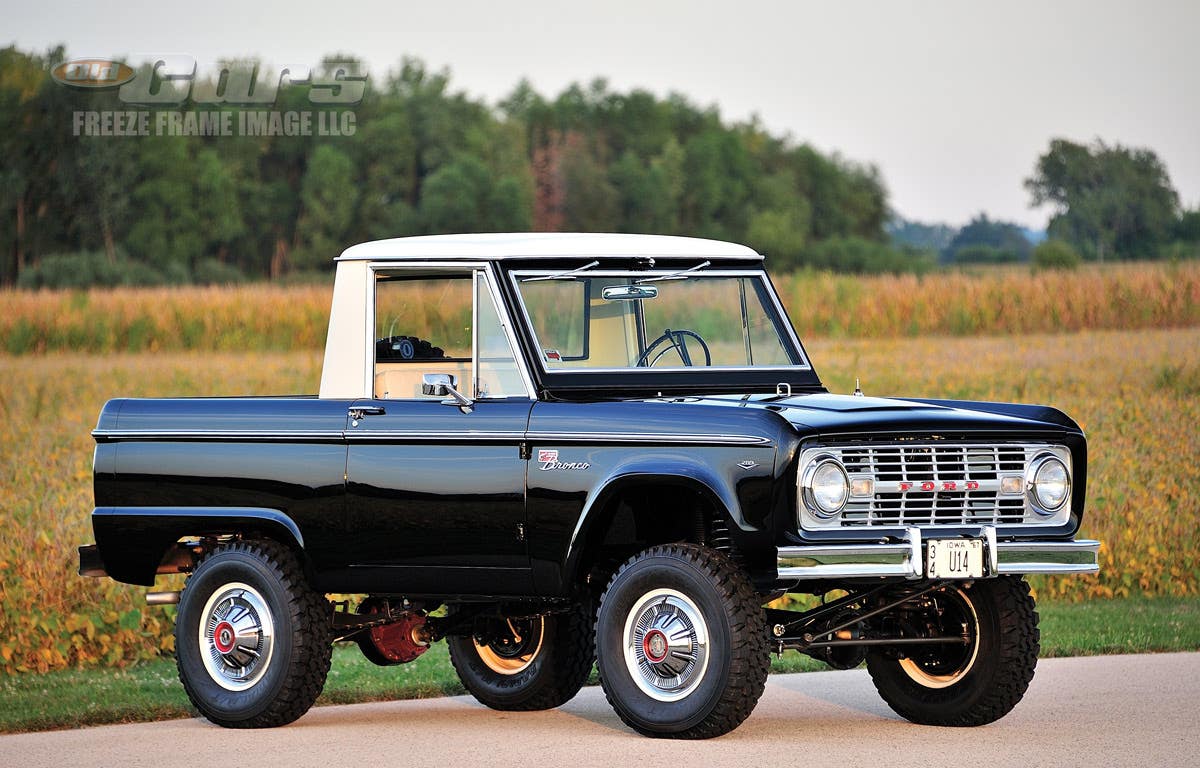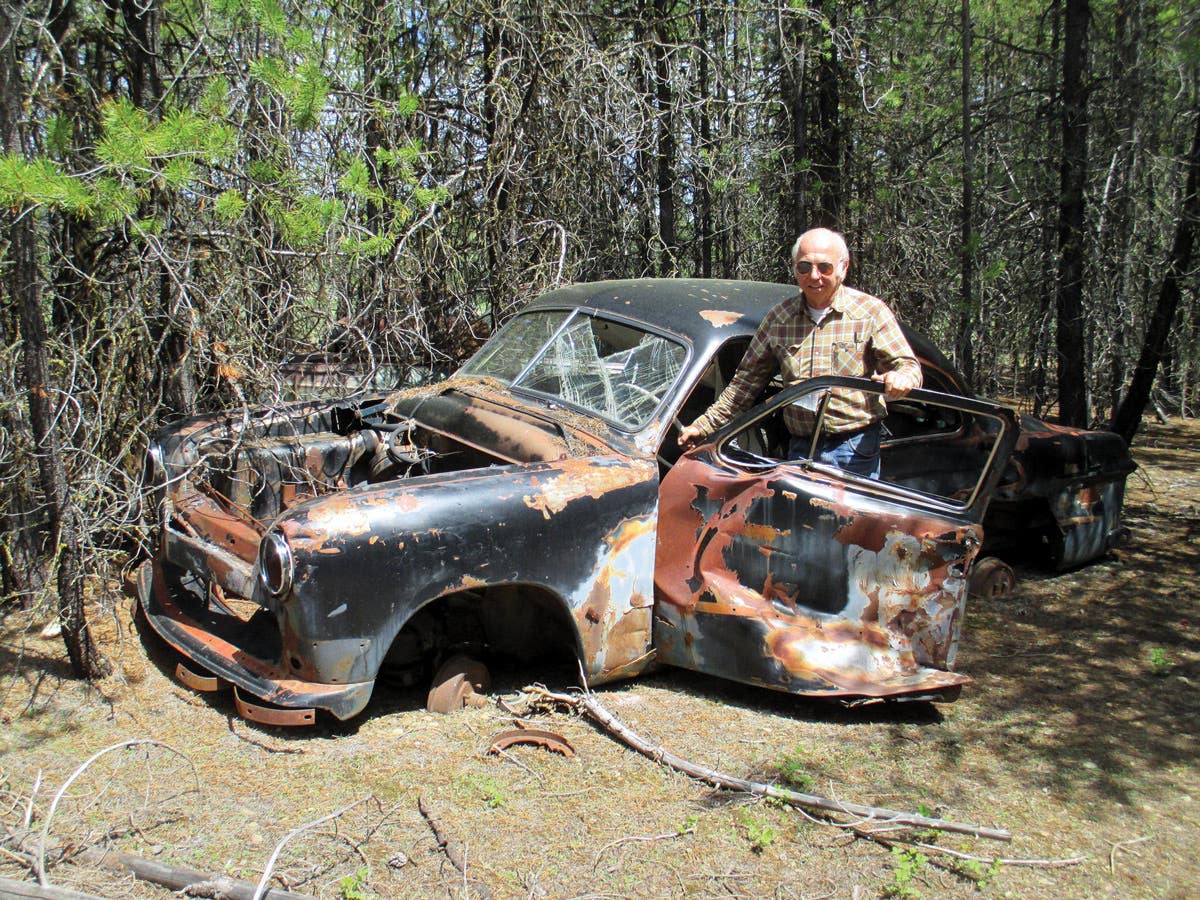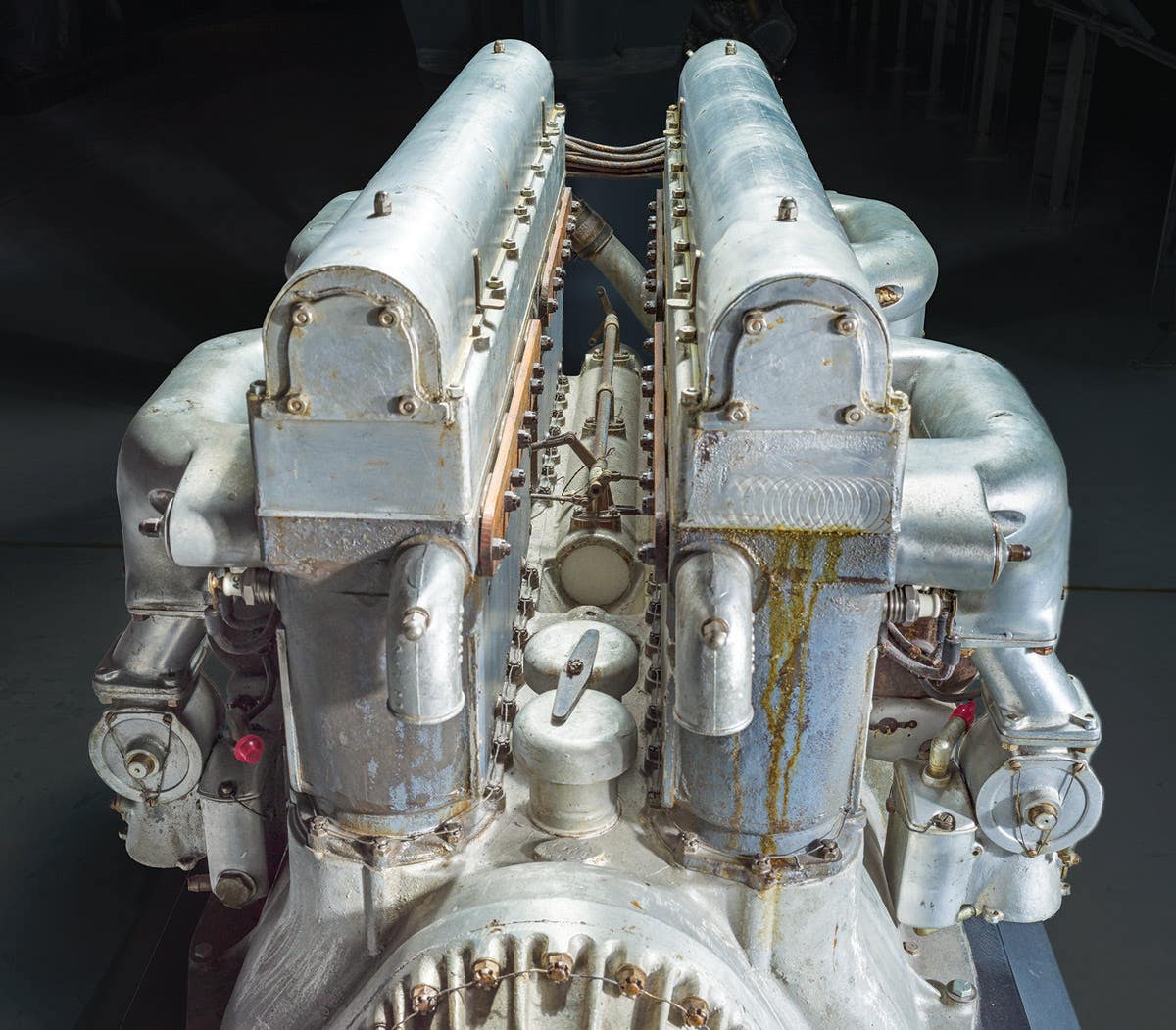It’s not an everyday occurrence to come across an original, unrestored 1965 AMC Rambler Ambassador 990 in pristine condition, but there’s always a first. In the summer of 2024, I received a lead on an original ’65 Rambler Ambassador 990 that had recently shown up in Avon, Ind. — and it turned out to be one of the nicest unrestored examples of any 60-year-old vehicle I’d ever seen and photographed.
On Sept. 30, 1964, Raymond Kramer, of Kenosha, Wis., ordered a new 1965 AMC Rambler Ambassador 990 four-door sedan from Johnson & Sons Co., Inc., in Wisconsin Rapids, Wis., and while doing so checked off just about every factory option available including the 327-cid V-8, Flash-O-Matic Transmission, air conditioning, power steering and Montego Rose and Taupe two-tone paint. Leaving little to spare, Kramer ordered the optional individually adjustable seats, light and visibility groups, vinyl trim, AM-FM radio with Vibra-Tone rear seat speakers and front seat retractable seatbelts.
It’s not clear as to why Kramer ordered the car in Wisconsin Rapids and then had it delivered to him in Kenosha, where AMCs were built. When Kramer passed away, he left the car to his nephew, who never titled it. In 1994, Kramer’s nephew sold the car to longtime American Motors Owners Association member Jim Webb, who also owns an AMC parts business. When Webb purchased the car from Kramer’s nephew, the nephew didn’t elaborate on the car’s history, so Webb doesn’t know why the AMC went halfway across Wisconsin and back before Kramer originally took delivery.
Webb continued to keep the AMC in pristine condition for the next 30 years. By 2024, he was in the early stages of retiring from his AMC parts business and decided it was time to start downsizing his now-sizable collection. During a recent phone conversation, Webb said the ’65 AMC Ambassador 990 wasn’t getting much use and, “It was time to pass it on to someone who could enjoy it.” Webb went on to say he still has a decent inventory of NOS AMC parts, but the formal business no longer exists.
Mark Preis purchased the AMC from Webb in May 2024. For Preis, the AMC reminded him of a part of his youth.
“When I was younger, my father owned a 1965 AMC Rambler Ambassador 990 four-door sedan, and about five years ago, I decided to see if I could find an identical one,” Preis said. “I discovered this car on Facebook Marketplace and decided to buy it. My father’s ’65 AMC Rambler Ambassador 990 was similar, but his was built with the 232-cid six with a three-speed transmission and bucket seats. When I was a kid, the console with the two slots that held the seatbelts in place stuck with me. Unfortunately, during my search, I couldn’t find one with the exact factory items like my father’s car. This one is as close as I could find, and the way it had been well cared for over the years was the deal breaker. I had to have it.”
Preis drives his ’65 Ambassador Rambler 990 when Mother Nature cooperates and displays it at local car shows near his home in Avon.
Building a bigger Rambler
In February 1962, George Romney resigned as president and CEO of American Motors Corp. to successfully run for governor of Michigan. AMC’s board of directors elected him vice-chairman and granted him a leave of absence, and Roy Abernethy, a former Packard sales manager, became president.
Whereas Romney concentrated on building AMC’s successful compacts, Abernethy’s ultimate goal was for AMC to meet the Big Three head to head, matching AMC’s much larger rivals model-for-model by producing large cars in addition to its small cars. By 1969, the Ambassador’s wheelbase would grow to 122 inches, an inch longer than that of the Ford LTD! Overall length would expand to 208 inches, up from 189.3 inches in 1963, and its weight would increase by some 350 lbs.
But it would take several years for the larger cars to come on line. In the interim, Abernethy and AMC styling chief Dick Teague undertook to draw as sharp a distinction as possible between the 1965 Ambassador and the less-prestigious but more mainstream Rambler Classic. They began by extending the wheelbase of AMC’s luxury line from 112 to 116 inches. Body shells continued to be shared with the Classic series, with the four-inch difference appearing in the length of the Ambassador’s impressive-looking hood.
A number of styling studies were prepared for the 1965 Ambassador. One of these bore some resemblance to Chrysler’s 1963 experimental Turbine Car. Another featured a flat grille with seven or eight horizontal ribs. Yet another sported bridgework that might have been inspired by a giant waffle iron. In keeping with AMC’s conservative image, none could be considered radical in any sense.
In the end, Teague settled on a bold-yet-pleasing, extruded-aluminum grille design with a number of horizontal ribs V-shaped slightly forward and bordered by stacked, quad headlamps. Full-length trim capped the crown of the side and fender panels, extending from the V-shaped profile of the front fenders to the full-height vertical taillamps, silhouetting the car’s striking new profile. The roofline was crisp, and the mildly sculptured side panels served to further accentuate the appearance of length. Chrome trim around the wheel openings were standard on hardtop and convertible models. AMC, obviously pleased with the results, talked up the 1965 Ambassador’s “impressive new long-lived styling.” Motor Trend agreed, calling it a “strikingly handsome automobile.”
But there was more to this new Ambassador than just a pretty face. Consider, for example, the power teams. For the first time, a Rambler Ambassador was available with six-cylinder power. This was a brand-new engine, although it would not be totally inaccurate to think of it as an updated version of the overhead-valve six that had been used for many years by the Nash Ambassador. Of modern short-stroke design, and featuring a seven-main-bearing crankshaft with eight counterweights, it had a displacement of 232 cubic inches. With a two-barrel carburetor, it developed 155 hp. AMC proudly referred to this engine as “the world’s most advanced Six.”
Far more popular in the Ambassador, however, were the two V-8s, with displacements of 287 and 327 cubic inches. Their respective horsepower ratings were 198 and a “zestful” 270, both at 4,700 rpm, while the torque figures came in at 280 and 360 lb-ft at 2,600 rpm, respectively. Differing only in their bore, compression ratio and carburetion (two barrels versus four), the V-8s traced their origins to the original AMC-developed V-8 introduced in mid 1956.
Several transmission choices were offered. Standard was the usual three-speed manual with column-mounted lever, but not many Rambler Ambassadors were so equipped. Options included a Borg-Warner overdrive, controlled by means of a knob mounted below the dash; “Twin-Stick,” which provided two shift levers on the console (one for the three-speed gearbox and the other for the overdrive); and Flash-O-Matic, a three-speed automatic supplied by Borg-Warner. The last could be purchased with either the traditional column control or, for cars fitted with bucket seats, the console-mounted “Shift-Command.” And at mid year, yet another exciting option joined the list: a fully synchronized Warner T-l0 four-speed manual gearbox.
Other options included All-Season air conditioning, competitively priced at $327.65; power brakes, either drum/drum or disc/drum (the latter a brand-new feature); tachometer; speed control; Adjust-O-Tilt steering wheel; Duo-Acoustic or Vibra-Tone rear-seat speakers; and the usual array of power equipment, plus the famous (or infamous) reclining seat/twin bed conversion that had been a Nash feature for many years. In addition, the new station wagon could be purchased with a side-hinged rear door, and two extra passengers could be accommodated if the optional third seat was ordered.
AMC’s decision to upgrade the Ambassador and make it larger for 1965 paid off — output more than tripled from a meager 18,647 units in 1964 to 64,145 in 1965. It certainly seemed that President Abernethy’s strategy was right on target, so the Ambassador cruised into 1966 offering more of the same.
Two trim levels were offered in 1965. The Ambassador 990 and 880 were priced to compete with the Chevrolet Impala and Bel Air; the Ambassador 990 proved more popular than the less-expensive 880 and outsold it three to one. The 990 was offered in four-door sedan, two-door hardtop, Cross Country station wagon and convertible body styles, plus an additional upscale hardtop, the 990-H, which featured bucket seats and special interior appointments. The 880, priced about $90 lower, came in two- or four-door sedan and station wagon configurations.
AMC billed its entire 1965 Rambler line the “Sensible Spectaculars,” with the Ambassador hyped as “the longest, the most luxurious, the top performer of the three great new Ramblers.” Motor Trend, which road-tested a Twin-Stick overdrive-equipped Ambassador convertible, found it sensible enough, but not particularly spectacular. To Technical Editor Bob McVay, the car was commendably economical, averaging 16.4 mpg over a 1,000-mile test run. “Traveling comfort was the Ambassador’s biggest selling point, along with its exceptionally powerful Bendix duo-servo drum brakes,” he wrote. “With the thin bucket seats that recline, driver and passengers can enjoy a high degree of riding comfort.... Ride and handling cater to comfort rather than control.... Many passers-by commented on the car’s good looks,” McVay recalled, adding, “Our summary: a nice, comfortable, quiet, well-built family automobile that rather neglects the performance market.”
Sales of the reformulated 1965 Ambassador reflected the car’s more important status in the AMC hierarchy. One ad during the 1965 model year boasted, “You’ll soon see why we’ve had to increase Ambassador production by four times to meet demand!” And indeed, output soared from 18,647 units in 1964 to 64,145 in the 1965 model year. That was a Rambler Ambassador record (the previous being 37,811 in 1963), only to be broken the next year when 71,692 Ambassadors were sold in 1966. It would be the Ambassador’s high-water mark.
For 1967, the Ambassador (no longer billed as a Rambler) continued to grow. The wheelbase was increased by another 2 inches, overall length by 3-1/2 inches. Weight increased by nearly 300 lbs, and even the styling looked more massive. Abernethy was about to resign as AMC president, but his influence was just really commencing to be felt. As he had intended, the Ambassador continued to grow until it eventually rivaled the full-sized models from the Big Three. In retrospect, the handsome midsized 1965-1966 models were “interim Ambassadors” en route to becoming as big as the Big Three’s full-size cars.
Love AMC rides? Here are a few more articles for your reading enjoyment.
SHOW US YOUR WHEELS!
If you’ve got an old car you love, we want to hear about it. Email us at oldcars@aimmedia.com
If you like stories like these and other classic car features, check out Old Cars magazine. CLICK HERE to subscribe.
Want a taste of Old Cars magazine first? Sign up for our weekly e-newsletter and get a FREE complimentary digital issue download of our print magazine.



